May 18, 2025 | 07:09 GMT +7
May 18, 2025 | 07:09 GMT +7
Hotline: 0913.378.918
May 18, 2025 | 07:09 GMT +7
Hotline: 0913.378.918
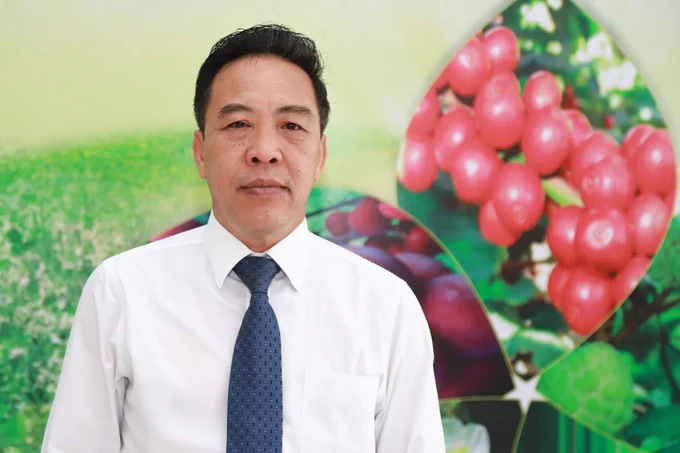
Mr. Ha Nhu Hue, Director of the Department of Agriculture and Rural Development of Son La province. Photo: Tung Dinh.
Talking to the Vietnam Agriculture Newspaper, Mr. Ha Nhu Hue, Director of the Department of Agriculture and Rural Development of Son La province, explained that Son La’s agriculture started at a low point. In the past, it relied heavily on extensive farming, depending on natural conditions and self-sufficient production. By restructuring and shifting the mindset from production to an agricultural economy, Son La's agriculture has become an economic pillar of the sloping land.
“Son La’s agriculture is shifting towards green, fast, and clean production, applying high technology to meet market standards,” affirmed Mr. Ha Nhu Hue.
Sir, looking back at Son La’s transformation from a poor corn capital to a key fruit-growing region in the northern mountainous area, the largest Arabica coffee and tea-growing region in the country, and a region known for tea and sugarcane, many call Son La’s agriculture a phenomenon. What do you think has driven this transformation?
Looking at Son La’s agriculture today, we see many achievements. This success stems from consistent solutions and policies by the Central Government, the Provincial Party Committee, the People's Council, and the People’s Committee of Son La province. Additionally, the determination of the agricultural sector and localities and the tireless efforts and creativity of farmers have been crucial.
From 2010 to 2023, Son La province implemented policies to support crops, livestock, aquaculture, and safe agricultural products and food processing and consumption. These policies aimed to promote and exploit the potential of land, labor, and climate, linking agricultural production with VietGAP, organic, and high-tech applications. They also addressed pressing social issues like lack of production land, employment, income, poverty reduction, natural disasters, new rural construction, and ensuring ecological sustainability. Between 2020 and 2023, the People’s Council and People’s Committee of Son La province issued seven policies supporting agricultural production, with a total fund of more than 123.5 billion VND.

Mai Son custard apple area, Son La. Photo: Tung Dinh.
From 2020 to 2023, the average GRDP growth of the agriculture, forestry, and fishery sectors reached 5.1% per year. The total annual cultivated area is 212,602 hectares, with 84,160 hectares dedicated to fruit trees by the end of 2023. Rice production amounts to 206,037 tons, corn 337,162 tons, cassava 526,706 tons, sugarcane 652,012 tons, rubber 3,800 tons, fresh tea buds 54,296 tons, and coffee beans 34,345 tons.
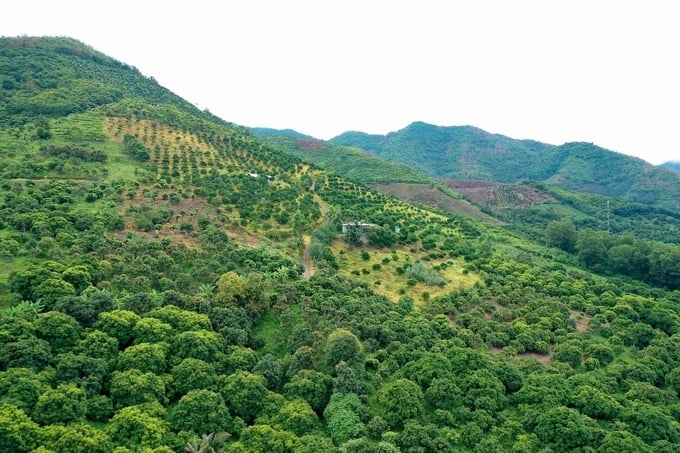
Son La also hosts 12 science and technology enterprises, 11 of which operate in the agricultural sector. The Song Ma longan area spans nearly 8,000 hectares, almost double that of Hung Yen province. Photo: Tung Dinh.
Currently, Son La boasts five recognized high-tech agricultural areas. These include the Vinatea Moc Chau high-tech tea area, covering 329.64 hectares, and the Moc Chau high-tech dairy farming area, involving 279 households and 2 facilities producing 16,414 dairy cows annually with Moc Chau Dairy Cow Breeding Joint Stock Company. The high-tech coffee production area in Chieng Chung and Chieng Ban communes (Mai Son district) also encompasses 684 households and 368.1 hectares of coffee. Additionally, the high-tech custard apple area in Hat Lot town, Co Noi commune, Na Bo, and Chieng Luong (Mai Son district) involves 166 households and individuals producing 334.2 hectares of custard apples in cooperation with Anh Trang Cooperative, Me Lech Cooperative, and OHAYO Cooperative.
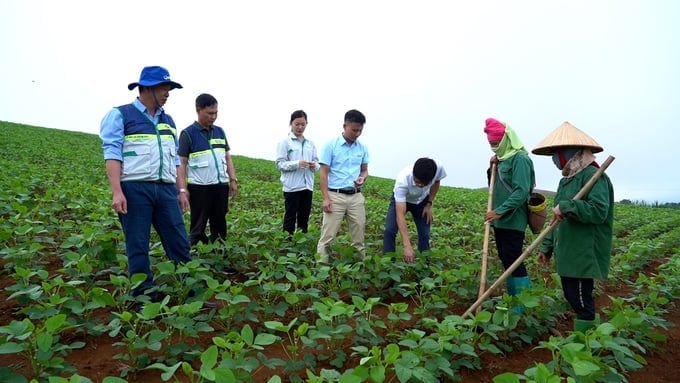
Linking efforts to build raw material areas with Doveco. Photo: Hoang Anh.
The province has 560 factories and agricultural processing facilities, attracting investment in vegetable and fruit processing. Key facilities include Nafoods Group's passion fruit and vegetable processing factory in the Moc Chau district, ICFood Group's high-tech agricultural product preservation and processing factory in Van Ho district, TH Group's fresh fruit and herbal processing factory in Van Ho district, and Doveco Son La's vegetable and fruit processing center.
Son La has made significant efforts to find markets for its agricultural products. What strategies and lessons can you share about Son La's agricultural market?
In recent years, as raw material areas and high-tech agriculture have developed, Son La's political system has focused on promoting and boosting the consumption of agricultural and forestry products. From provincial leaders and agencies to cooperatives and farmers, everyone participates in events like Fruit Week, Safe Agricultural Products, Northwest Agricultural Products Trade Fair, Moc Chau Plum Picking Festival, Yen Chau Mango Festival, Song Ma Longan Festival, and the Son La Coffee Festival.
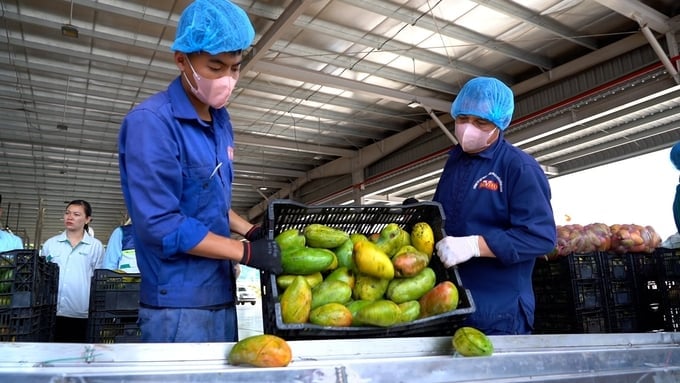
Attracting investment to eliminate processing bottlenecks. Photo: Hoang Anh.
The province also encourages businesses to cooperate with cooperatives to control households, implement the production process of exported fruits, and collaborate with enterprises qualified to export. They organize and support cooperatives to participate in weeks of introducing and selling agricultural products at supermarkets and shopping centers such as Hanoi Hapro Trading Corporation, Big C Retail Group, Vingroup, AEON Vietnam Co., Ltd., and Lotte Supermarket. Additionally, they expand the model of centers to introduce, sell, and connect daily consumption of agricultural products according to the OCOP Program.
As a result, Son La’s export activities have achieved high growth rates. In 2023, the value of exported goods reached $186.8 million, with agricultural products accounting for $177.8 million, an increase of 8.99% compared to 2022. The output of exported agricultural products reached 173,033 tons.
More and more business models in Son La link cooperatives and farming households, producing in association with agricultural processing factories. For example, Son La Sugarcane Joint Stock Company signed contracts with nearly 10,000 households to produce and consume sugarcane. Enterprises and cooperatives joined forces with 12,000 households for coffee production and consumption. Moc Chau Dairy Cow Breeding Joint Stock Company is linked with nearly 469 livestock households and hundreds of corn-growing households that serve the TMR Factory.
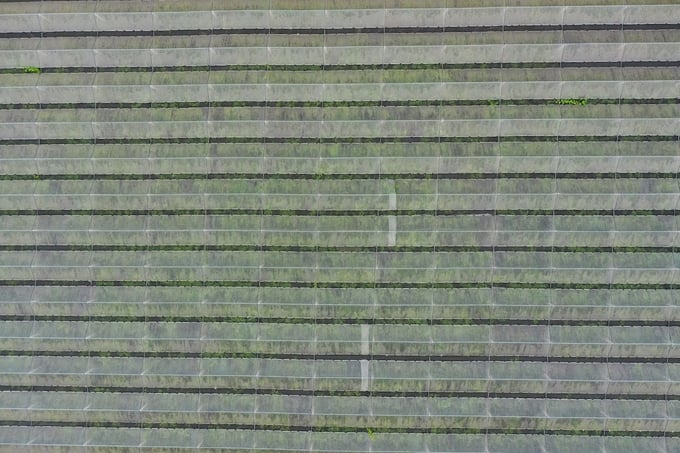
High-tech agriculture in Moc Chau district. Photo: Tung Dinh.
Son La supports maintaining and developing 285 safe agricultural and aquatic food supply chains. These include 38 safe vegetable chains covering 318 hectares, yielding 12,646 tons per year; 178 safe fruit chains of mango, longan, plum, passion fruit, avocado, orange, grapefruit, strawberry, and dragon fruit covering 4,298 hectares with an output of 49,519 tons per year; 5 coffee chains covering 2,160 hectares, yielding 4,518 tons per year; and 10 tea chains covering 544 hectares with an output of 7,535 tons per year.
The province has 101 establishments applying effective VietGAP and GlobalGAP good agricultural production practices. The Department of Intellectual Property has granted protection certificates to 28 agricultural products of Son La province. There are also 300 growing area codes covering over 4,608 hectares for export and 151 OCOP products.
Throughout our search for and expansion of the market, we have focused on preserving the image, brand, and quality of Son La agricultural products as core values to continue promoting.
“In Son La today, the collective economic sector has overcome its long-standing weakness. It contributes to building new rural areas, ensuring social security, order, and safety, and gradually affirming its position and fundamental role in the national economy. This is demonstrated by the increasing number of agricultural cooperatives in Son La province, with 864 cooperatives, of which over 30% have applied water-saving irrigation technology, net houses, greenhouses, and good agricultural production processes,” said Mr. Ha Nhu Hue.
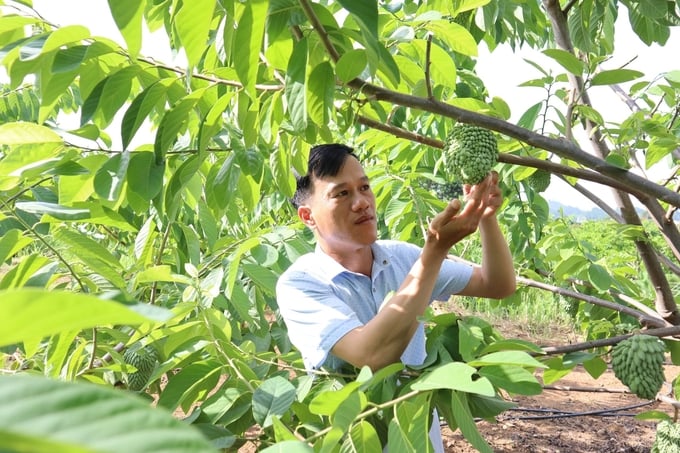
Son La farmers apply science and technology in production. Photo: Quang Dung.
What is Son La’s development trajectory in the future?
Son La will continue to review and propose amendments and supplements to mechanisms and policies to attract investment resources in the agricultural and rural sectors. We will research and promulgate mechanisms and policies to encourage organizations and individuals to invest in agriculture. This includes supporting innovation, creativity, and start-ups; accessing scientific, technical, and market information; researching and transferring scientific and technical advances; digital transformation; and developing land, credit, and human resources.
In particular, Son La province has shifted from building “agricultural supply chains” to developing “industry value chains.” We will create and effectively develop concentrated raw material areas, synchronize mechanization, and improve agricultural products’ processing and preservation capacity according to production linkage models aligned with quality standards and raw material area codes. We will also apply high technology in modern agricultural production, transform production structures, and promote transformation.
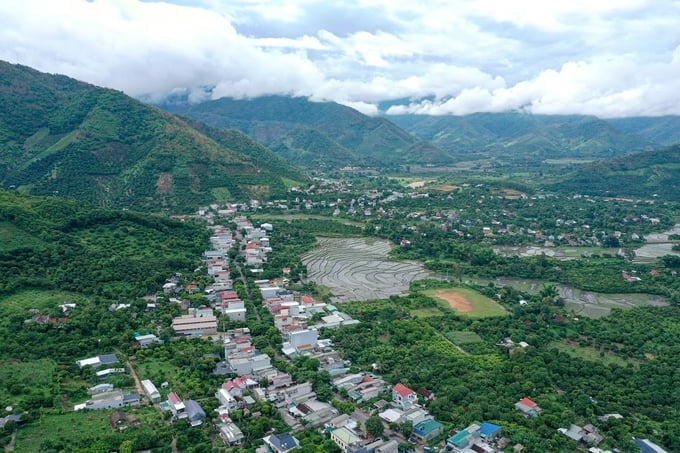
Son La, a decade of climbing hills. Photo: Tung Dinh.
We plan to increase investment and apply mechanization in all stages of the production value chain, suitable to the conditions of each locality and each type of crop and livestock. We will develop the industry of preserving and processing agricultural, forestry, and fishery products, encouraging deep processing, refined processing, and high technology. We will focus on developing supporting industries and support services to enhance agricultural development, increase agricultural products' added value and competitiveness, and form a logistics system to improve agricultural products’ economic and commercial efficiency.
Another solution is to expand appropriate and effective forms of production organization. We will promote agricultural production linkages along the value chain, develop forms of cooperation, and link production, processing, and consumption of farm products, connecting with the global consumption system. Enterprises will play a key, core, and leading role. We will innovate and develop cooperatives and cooperative groups and develop the private economy to organize linkages between farmers, cooperative organizations of farmers, enterprises, and other economic partners in agricultural product production, harvesting, preservation, processing, and consumption.
Thank you, Sir!
Translated by Quynh Chi

(VAN) 14 out of 35 domesticated elephants in Dak Lak province have had their living conditions improved, with 11 of them currently participating in the non-riding elephant tourism model.

(VAN) Muong Nhe Nature Reserve hopes that being upgraded to a national park will lay the foundation for forest protection efforts to be carried out in a systematic, modern, and sustainable manner.
/2025/05/16/3923-2-171845_52.jpg)
(VAN) Lower costs, higher yields, and improved soil quality are outstanding benefits that soybeans bring when integrated into the crop rotation system.

(VAN) The 'For a Green National Environment' programme aims to promote a green lifestyle, support businesses in implementing ESG practices, and turn Net Zero commitments into concrete actions.

(VAN) Cold-barn systems efficiently manage environmental and temperature conditions, which aids in the prevention of respiratory diseases in pigs and protects them from the vectors that transmit African swine fevers.

(VAN) To tackle challenges, the project 'Addressing key technical bottlenecks in the grouper supply chain in Vietnam' has been underway since 2024.

(VAN) The project 'Disease-Resilient and Sustainable Cassava Production Systems in the Mekong Region', funded by the Australian Center for International Agricultural Research (ACIAR), is being implemented from 2024 to 2028.